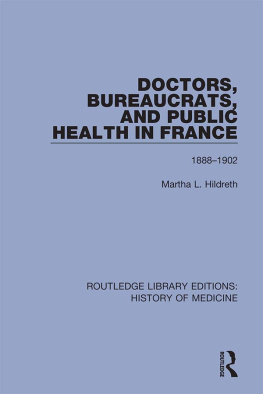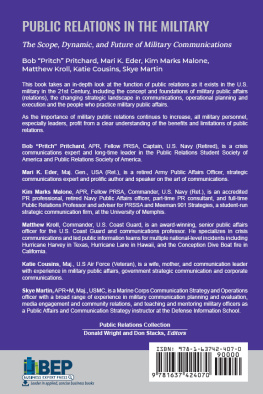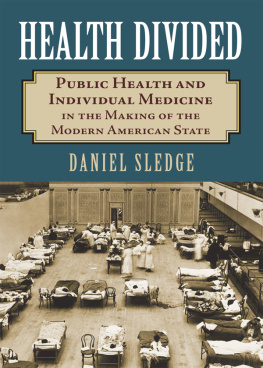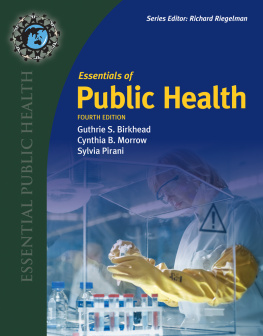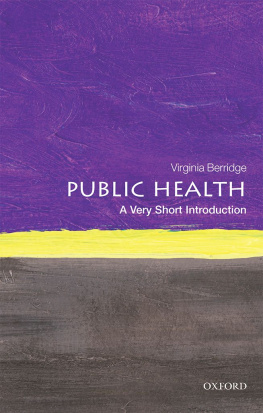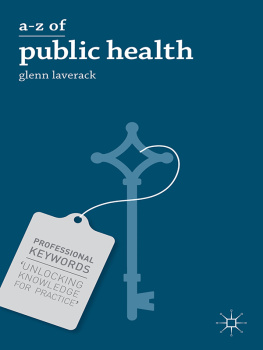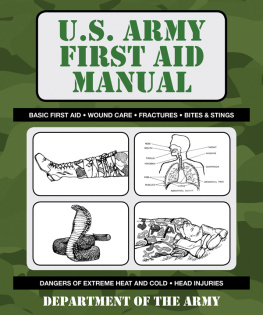Bobby A. Wintermute - Public Health and the US Military: A History of the Army Medical Department, 1818-1917
Here you can read online Bobby A. Wintermute - Public Health and the US Military: A History of the Army Medical Department, 1818-1917 full text of the book (entire story) in english for free. Download pdf and epub, get meaning, cover and reviews about this ebook. year: 2015, publisher: Taylor & Francis, genre: History. Description of the work, (preface) as well as reviews are available. Best literature library LitArk.com created for fans of good reading and offers a wide selection of genres:
Romance novel
Science fiction
Adventure
Detective
Science
History
Home and family
Prose
Art
Politics
Computer
Non-fiction
Religion
Business
Children
Humor
Choose a favorite category and find really read worthwhile books. Enjoy immersion in the world of imagination, feel the emotions of the characters or learn something new for yourself, make an fascinating discovery.

- Book:Public Health and the US Military: A History of the Army Medical Department, 1818-1917
- Author:
- Publisher:Taylor & Francis
- Genre:
- Year:2015
- Rating:5 / 5
- Favourites:Add to favourites
- Your mark:
Public Health and the US Military: A History of the Army Medical Department, 1818-1917: summary, description and annotation
We offer to read an annotation, description, summary or preface (depends on what the author of the book "Public Health and the US Military: A History of the Army Medical Department, 1818-1917" wrote himself). If you haven't found the necessary information about the book — write in the comments, we will try to find it.
Public Health and the US Military is a cultural history of the US Army Medical Department focusing on its accomplishments and organization coincident with the creation of modern public health in the Progressive Era. A period of tremendous social change, this time bore witness to the creation of an ideology of public health that influences public policy even today. The US Army Medical Department exerted tremendous influence on the methods adopted by the nations leading civilian public health figures and agencies at the turn of the twentieth century.
Public Health and the US Military also examines the challenges faced by military physicians struggling to win recognition and legitimacy as expert peers by other Army officers and within the civilian sphere. Following the experience of typhoid fever outbreaks in the volunteer camps during the Spanish-American War, and the success of uniformed researchers and sanitarians in confronting yellow fever and hookworm disease in Cuba and Puerto Rico, the Medical Departments influence and reputation grew in the decades before the First World War. Under the direction of sanitary-minded medical officers, the Army Medical Department instituted critical public health reforms at home and abroad, and developed a model of sanitary tactics for wartime mobilization that would face its most critical test in 1917.
The first large conceptual overview of the role of the US Army Medical Department in American society during the nineteenth and early twentieth centuries, this book details the culture and quest for legitimacy of an institution dedicated to promoting public health and scientific medicine.
Bobby A. Wintermute: author's other books
Who wrote Public Health and the US Military: A History of the Army Medical Department, 1818-1917? Find out the surname, the name of the author of the book and a list of all author's works by series.

